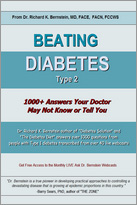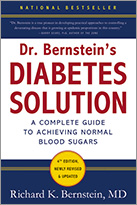Diabetes is so common in this country that it touches nearly everyone’s life—or will. The statistics on diabetes are staggering, and a diagnosis can be frightening: diabetes is the third leading cause of death in the United States. According to the most recent statistics compiled by the National Institutes of Health (NIH), which cover through 1996, there were 10.3 million diagnosed diabetics in America, and approximately 5.5 million who have not yet been diagnosed. This number has no doubt increased. Nearly 800,000 new diabetics will be diagnosed per year, according to NIH statistics; that’s three new cases every two minutes.
Even more alarming, the incidence of type 2—or what was once known as maturity-onset diabetes—among children eighteen years old and younger has skyrocketed. A Yale University study of obese children between ages four and eighteen appeared in the March 14, 2002, issue of the New England Journal of Medicine. The study found that nearly a quarter had a condition that’s often a precursor to diabetes. According to USA Today’s story on the report the same day, “The incidence of type 2 diabetes, the form that usually occurs in adults, has increased in young people, especially Hispanics, blacks, and Native Americans. Some regional studies suggest the incidence of type 2 in children has jumped from less than 5%, before 1994, to up to 50%.” That children are increasingly getting a disease that once targeted fifty- to sixty-year-olds presents a new and frightening potential public health disaster.
Each year, tens of thousands of Americans lose their eyesight because of diabetes, the leading cause of new blindness for people ages twenty-five to seventy-four. Ninety-five percent of diabetics have type 2 diabetes. Because 80 percent of type 2 diabetics are overweight, many inappropriately feel that the disease is their own fault, the result of some failure of character.
Since you are reading this book, you or a loved one may have been diagnosed recently with diabetes. Perhaps you have long-standing diabetes and are not satisfied with treatment that has left you plagued with complications such as encroaching blindness, foot pain, frozen shoulder, inability to achieve or maintain a penile erection, or heart or kidney disease.
Although diabetes is still an incurable, chronic disease, it is very treatable, and the long-term “complications” are fully preventable. For nearly sixty years, I’ve had type 1 diabetes, also called juvenile-onset or insulin-dependent diabetes mellitus (IDDM). This form of diabetes is generally far more serious than type 2, or non-insulin-dependent diabetes mellitus (NIDDM), although both have the potential to be fatal.* Most type 1 diabetics who were diagnosed back about the same time I was are now dead from one or more of the serious complications of the disease.Yet after living with diabetes for nearly sixty years, instead of being bedridden or out sick from work (or dead, the most likely scenario), I am more fit than many nondiabetics who are considerably younger than I. I regularly work 12-hour days, travel, sail, and pursue a vigorous exercise routine.
I am not special in this regard. If I can take control of my disease, you can take control of yours.
In the next several pages I’ll give you a general overview of diabetes, how the body’s system for controlling blood sugar (glucose) works in the nondiabetic, and how it works—and doesn’t work—for diabetics. In subsequent chapters we’ll discuss diet, exercise, and medication, and how you can use them to control your diabetes. If discussion of diet and exercise sounds like “the same old thing” you’ve heard again and again, read on, because you’ll find that what I’ve observed is almost exactly the opposite of “the same old thing,”which is what you’ve probably been taught. The tricks you’ll learn can help you arrest the diabetic complications you may now be suffering, may reverse many of them, and should prevent the onset of new ones.
We’ll also explore new medical treatments and new drugs that are now available to help manage blood sugar levels and curtail obesity.
* For a period of time, many people considered the designations type 1 and type 2 out of date, replacing them with the terms IDDM and NIDDM, which are slightly misleading and are losing credence. While it is true that most of those with type 2 can stay alive without injecting insulin, many patients who suffer from type 2, or so-called NIDDM, do inject insulin to preserve their health. The terms “autoimmune diabetes” for type 1 and “insulin-resistant diabetes” for type 2 are more precise, but are unlikely to take over for the much-easier-to-say type 1 and type 2.




